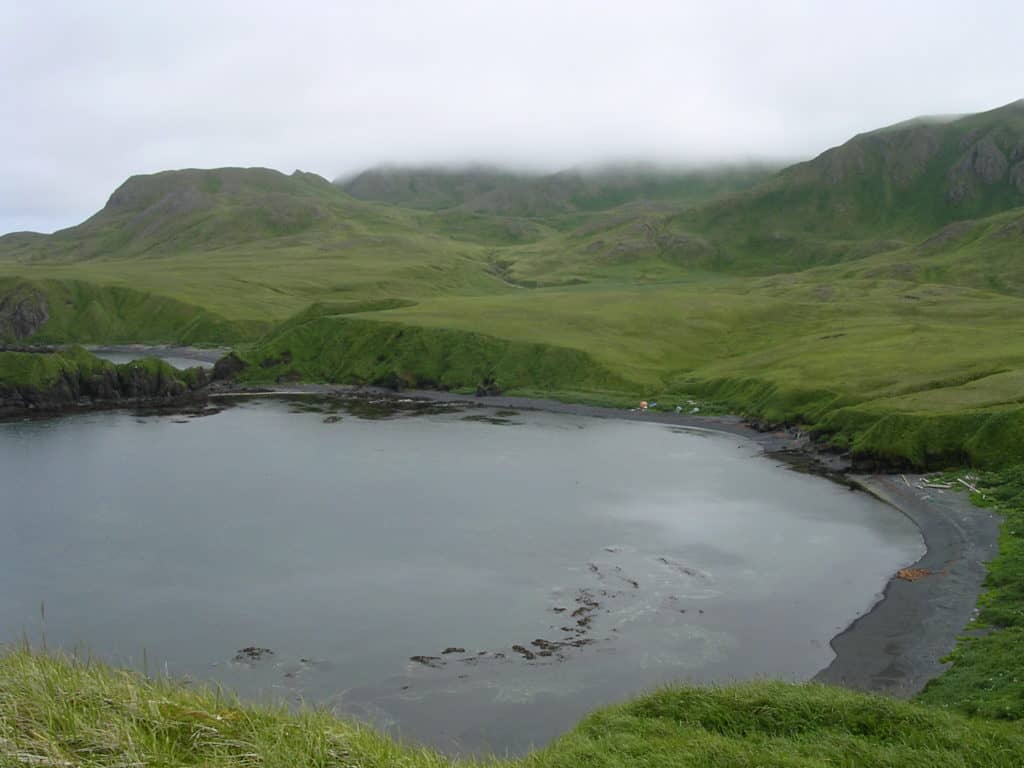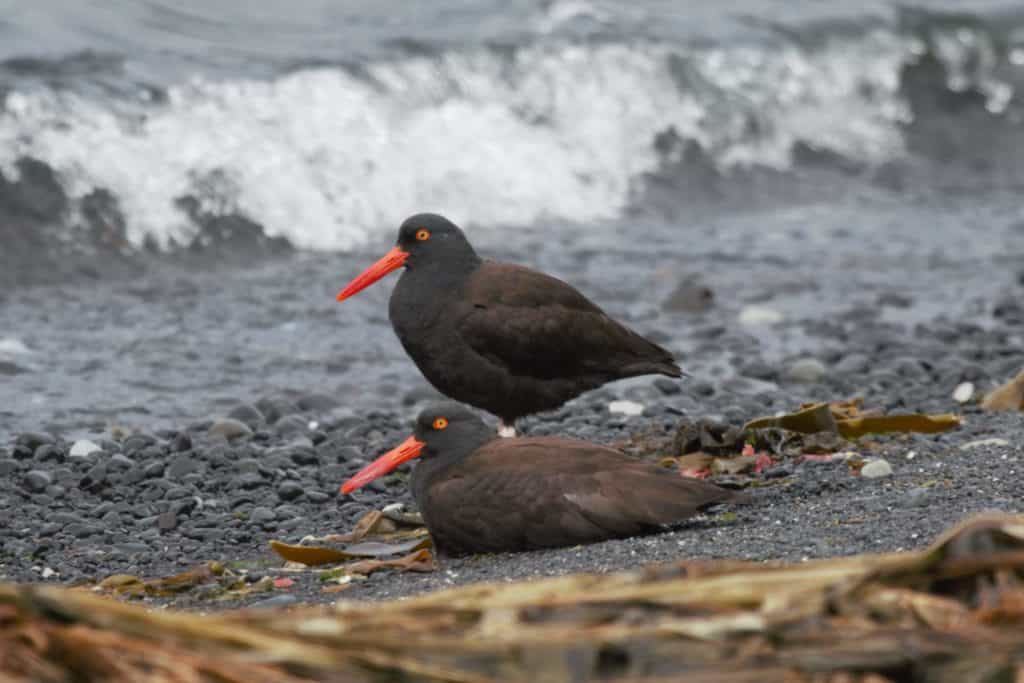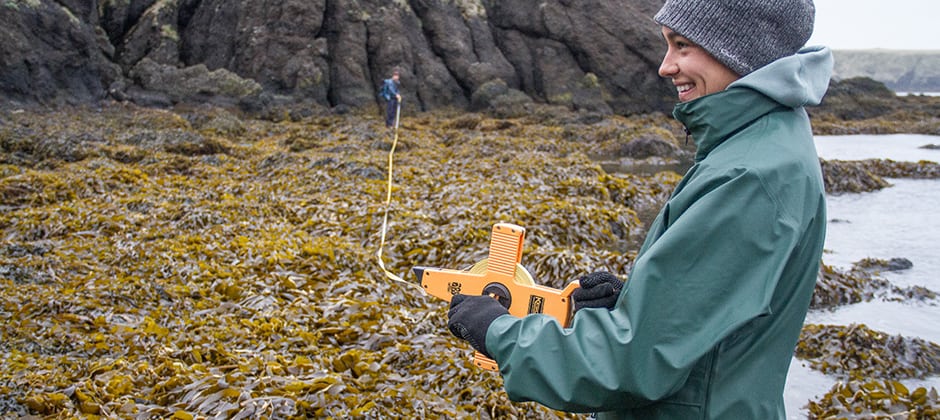Share this article
Eradication lets Rat Island shed its name
Rat Island, one of many islands in the Aleutian archipelago in Alaska, used to be aptly named. Invasive rats first arrived after escaping from a Japanese shipwreck in the 1780s. They multiplied and multiplied, until by the early 2000s, they had taken over the island and its ecosystem.
“When you go to these islands and stay on them and live with rats a couple weeks at a time, you tend to be sympathetic toward them,” said Carolyn Kurle, an associate professor of conservation biology at the University of California San Diego. “They’re pretty amazing animals, and you appreciate them for the wild animal that they are. That being said, they wreak a lot of havoc.”
The Norway rats (Rattus norvegicus) eat birds that are already at low densities on the island, such as black oystercatchers (Haematopus bachmani) and glaucous-winged gulls (Larus glaucescens). Those shorebirds prey on invertebrates like snails, limpets and barnacles. When the shorebirds are removed from the system, those invertebrates proliferate and overindulge on algae and kelp, disrupting the ecosystem.

Kurle and her team stayed at a campsite on Rat Island where they gained an appreciation for the invasive rats. Credit: Carolyn Kurle
Rat Island isn’t the only Aleutian island with this problem. When Kurle was surveying rats on the islands in the early 2000s, she found it was only one of about 17 Aleutian Islands with a rat problem. But other attributes set it apart, making it a good candidate for an eradication program.
“It’s relatively isolated from other islands with rats, so it’s difficult for rats to swim there, making it less likely rats would recolonize the island if they were to be removed,” she said. After an initial study published in 2008, The U.S. Fish and Wildlife Service teamed up with The Nature Conservancy, Alaska and Island Conservation and got permission to conduct a rat eradication experiment, using what she called an “aerial bombardment with rodenticide.”
Managers dropped bait with rodent poison from helicopters onto the remote island, trying to time it late enough in the fall so that rats would be more likely to target the bait as their food resources decline seasonally. They also targeted times when rainfall would be more likely to dilute the toxicant so it wouldn’t linger too long in the system, “but not too late that the weather was too gnarly to have a helicopter go up,” Kurle said.
The team dropped the bait in fall 2008. No evidence of rats were found when the island was surveyed in spring 2009, and Rat Island was declared officially rat free two years after bait application. Kurle recently led a study published in Scientific Reports looking at how successful those efforts were in bringing back the natural ecosystem five and 11 years later.
“There were significant recoveries, especially with the oyster catchers,” Kurle said. “And we saw significant decreases in the intertidal invertebrate species.” Numbers of birds and invertebrates on the island, as well as kelp cover, reached or approached the same levels as those observed on islands that never had rats.
The island rebounded so much that the U.S. Board on Geographic Names renamed it Hawadax (pronounced “how AH thaa”) Island, an Aleut name meaning “the island over there with two knolls.”

Eradicating invasive rats helped black oystercatcher populations recover on the island.
Credit: Island Conservation/Rory Stansbury
But the eradication effort didn’t come without some casualties of native species. For example, Kurle said, about 45 bald eagles (Haliaeetus leucocephalus) died from eating rats that had consumed the rodenticide. “That was definitely very upsetting,” she said. “But luckily eagle populations in Alaska are doing well.”
For Kurle, the paper shows that invasive rats can be removed from the Aleutians. “Now, we’ve proven it can be done and can be successful relatively quickly,” she said. “If further rat eradication from the Aleutian Islands is something the Fish and Wildlife Service wants to pursue, they have the data that it can be successful, but it’s very expensive and labor intensive to do multiple eradications.”
Meanwhile, the USFWS will continue to survey up and down the Aleutian chain, monitoring the birds and other wildlife in the area and making sure Hawadax Island is still doing well. But Kurle said if a rat had been reintroduced to the island they would know it because of how fast they multiply. “Rats are so prolific and make so many babies,” she said. One rat she examined was pregnant with 14 fetuses.
Since they haven’t seen any rats crop back up on the island, they have deemed it an ecosystem recovery. “We’re lucky we can do this to prove that it works and it’s a success story,” she said. “In conservation science, it’s good when you have a success or a win.”
Header Image: Researcher Carolyn Kurle measures transects of Rat Island as part of her research looking at the extent of rat invasion on the island. Credit: Island Conservation/Rory Stansbury.








